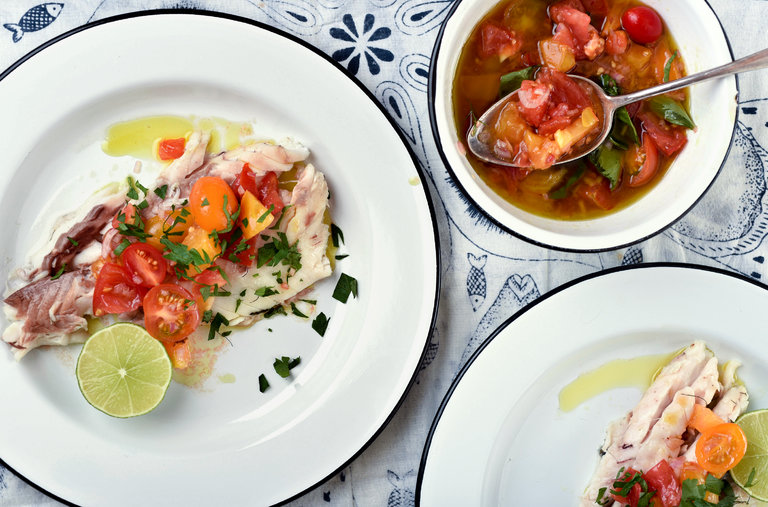During the summer grilling season, swordfish makes a succulent meal, one I look forward to. With longstanding environmental and sustainability issues, however, it hasn’t always been so easy to recommend with a clear conscience.
Because of overfishing, swordfish numbers were dangerously low for many years. But after a long-term boycott and moratorium put in place by concerned consumers and chefs — alongside stricter federal regulations — over the last several decades, swordfish populations in United States waters are now at a sustainable level, well above the target goal. That is good news.

CreditAndrew Scrivani for The New York Times
This isn’t to say there aren’t problems. There is the long-term issue of bycatch (the incidental capture of nontarget species, like other fish, turtles and seabirds). But large driftnets, which catch everything indiscriminately, have been replaced by hook and line gear, and there are better systems in place for the release of smaller fish and the protection of sea turtles. In general, the United States fishing industry, with government support, is continuing to explore new ways to improve sustainability efforts.
Another concern is mercury, which is found in many larger fish like swordfish and tuna. Eaten occasionally, though, as part of a varied diet, swordfish is considered a beneficial source of nutrition.
Always buy domestic swordfish — local, if possible — from smaller purveyors. Long Island fishers often bring fresh-caught swordfish to Greenmarkets in New York City, which is where I get mine, but it’s available from fishmongers all along the East Coast, from Maine to Florida. In other parts of the country, look to fisheries in the Gulf of Mexico and California. For more information, consult fishwatch.gov and seafoodwatch.org.
Now, with that bit of necessary preamble, may I say that swordfish is incredibly delicious? Even people who don’t like fish will often go for swordfish. It’s meaty, boneless and benign. It’s sweet and juicy, and it takes well to almost any kind of sauce. It will gladly accommodate bold, robust flavors.
I find swordfish is best pan-seared or grilled. Sometimes I like to cut it in very thin slices to make scaloppini and cook them very briefly on both sides in a hot pan. With a quickly sizzled sauce of brown butter and capers, dinner is a cinch (a slice of the swordfish on a roll makes a great sandwich, too). For grilling, I prefer slices about ¾-inch thick. The large, thick-cut swordfish you find at many fishmongers is hard to cook properly, and the portion size is huge. An 8-ounce slice is plenty big for one; depending on the menu, it’s enough for two.
Here, swordfish is topped with an easily made spicy salsa of cherry tomatoes, anchovy, hot pepper and smoky pimentón. (If swordfish is unavailable, choose a different firm-fleshed fillet.) The whole affair is rather salad-like, best accompanied by arugula or lettuce leaves. Served with roasted potatoes or garlic toast for a casual picnic-style supper, it is, essentially, summer on a plate.
Recipe: Grilled Swordfish With Smoky Tomato-Anchovy Salsa
Follow NYT Food on Twitter and NYT Cooking on Instagram, Facebook and Pinterest. Get regular updates from NYT Cooking, with recipe suggestions, cooking tips and shopping advice.






